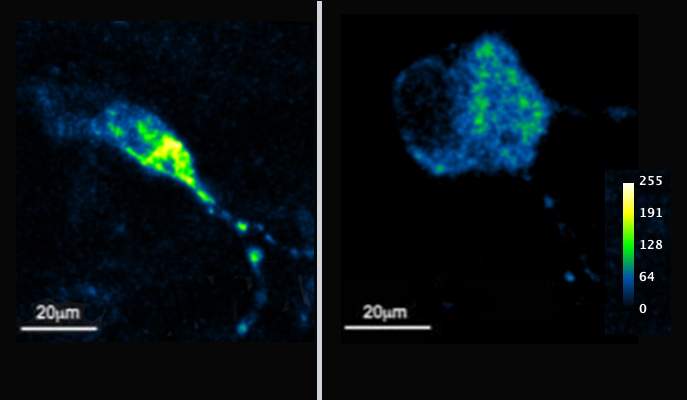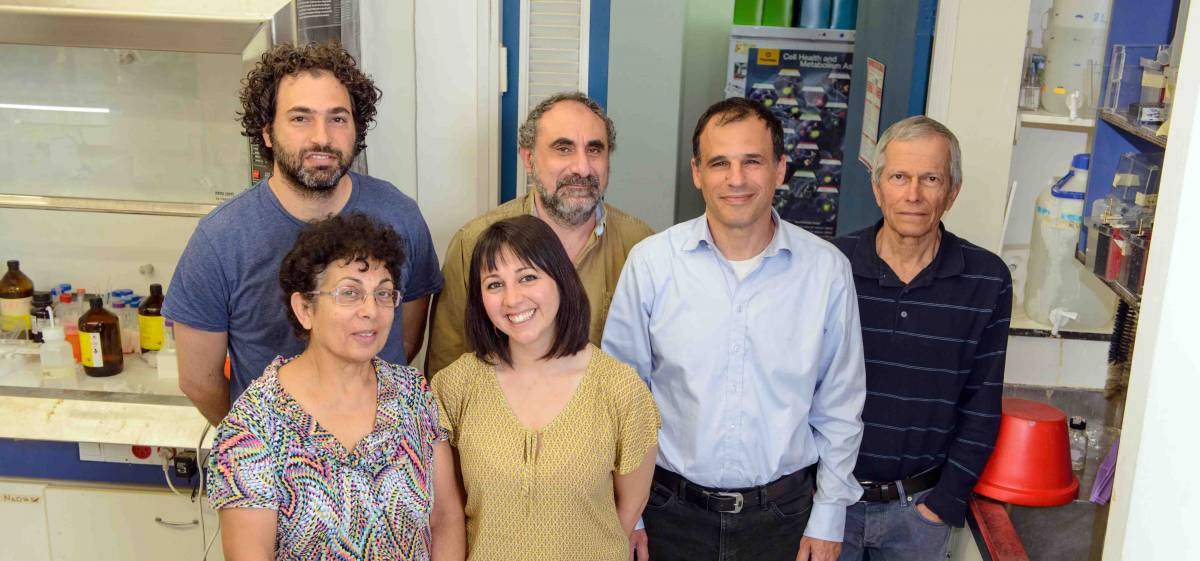Are you a journalist? Please sign up here for our press releases
Subscribe to our monthly newsletter:

At first, it seemed highly promising: Lab mice that could eat more without gaining weight were in better physical shape and had better heart function than normal. These mice had been genetically engineered so that a gene known as MTCH2 was neutralized in their muscle cells. The next step for the researchers was to knock out that gene again, this time in the mice’s forebrains. Like the muscle-knock-out mice, these mice had high metabolism rates and were more active than normal. But all was not right with these mice: They began failing navigation tests in mazes; their learning and memory were affected. The resulting collaboration between the labs of Prof. Atan Gross of the Weizmann Institute of Science’s Biological Regulation Department and Prof. Menahem Segal of its Neurobiology Department may lead to new directions in the study of neurodegenerative diseases, particularly Alzheimer’s.
The MTCH2 (pronounced Mitch 2) gene has been the focus of Gross’s lab for over a decade. MTCH2 was discovered in his lab in 2005: It is a protein that sits on the outer membrane of the cellular organelles called mitochondria – often known as the cells’ “power plants.” Gross’s lab has found, among other things, that MTCH2 is involved in cell suicide, in metabolism and in metabolic diseases, and more recently in neurodegenerative diseases.

Gross and Segal wanted to determine the outcome of knocking out the gene in the mice’s brains, and their collaboration enabled them to analyze the effect both on the molecular level and on the level of whole neurons, as well as on the nervous system as a whole. Their findings, which recently appeared in Scientific Reports, revealed that the ability of the mitochondria to move around in the cell was impaired, as was the balance of calcium inside the neuron. Calcium is especially crucial to signaling between nerve cells, so even slight variations in levels of this element within the neurons could interrupt their normal activity.
For Segal, the connection between balancing calcium and memory was unsurprising. He and his lab have been engaged, in recent years, in advancing a new approach to Alzheimer’s research that focuses on calcium, rather than the accepted one that blames the disease on amyloid plaques in the brain. “Billions of dollars are invested in finding a way to prevent these plaques, but it is still not clear whether the plaques are a cause or effect, or simply a parallel symptom of aging,” he says. “This study gives us some new leads on the way that the handling of calcium within the cell may be disrupted with age, as the mitochondria function drops, and how this dysfunction ties into a decline in mental function.”
The study was led by research student Antonella Ruggiero in Gross’s lab and conducted together with Dr. Yehudit Zaltsman of his lab; research student Etay Aloni, Dr. Eduard Korkotian and Efrat Oni-Biton of Segal’s lab; Drs. Yael Kuperman, Michael Tsoory and Ori Brenner of the Institute’s Veterinary Services; and Dr. Smadar Levin-Zaidman of the Chemical Research Support Department.
Even slight variations in levels of this element within the neurons could interrupt their normal activity
Gross and Segal say that the collaboration between a lab that studies the molecular processes of individual metabolic proteins and another that does brain research is uncommon, but the partnership has been fruitful for both. “It wasn’t easy at first,” says Gross. We had to find common ground. Fortunately, we did.” Segal agrees: “We love to work together because it allows us to probe everything, from the finest details to the big picture – from molecules to an entire system.”
Gross and Segal’s labs are continuing to collaborate in an effort to answer questions this research has raised. For example, how does MTCH2 cause changes in the cell’s calcium levels? And how is the movement of the mitochondria involved in memory and learning?
Prof. Atan Gross's research is supported by the Yeda-Sela Center for Basic Research; the Adelis Foundation; the Pearl Welinsky Merlo Foundation Scientific Progress Research Fund; the Hymen T. Milgrom Trust Donation Fund; the Rising Tide Foundation; and the estate of Tony Bieber. Prof. Gross is the incumbent of the Marketa and Frederick Alexander Professorial Chair.
Prof. Menachem Segal's research is supported by the Clore Center for Biological Physics.